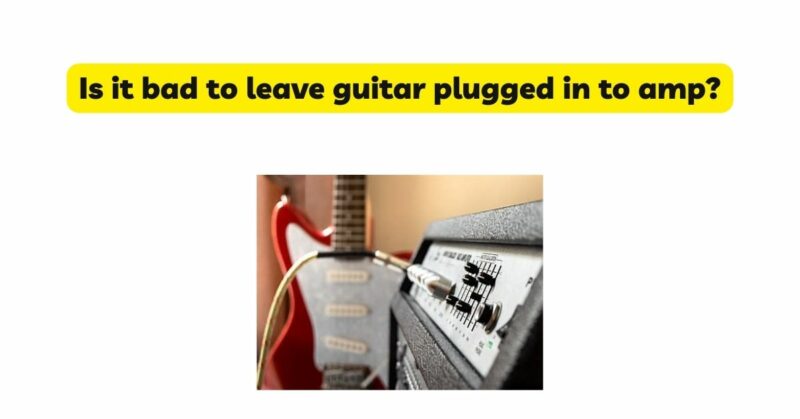One common dilemma among guitarists is whether it is detrimental to leave their instrument plugged in to an amplifier for extended periods. Some guitarists worry about potential damage to the guitar, the amp, or even the overall sound quality. In this article, we will explore the truth behind leaving your guitar plugged in to an amp and shed light on the myths and misconceptions surrounding this topic. By understanding the factors at play, we can make informed decisions and take proper care of our equipment.
- Passive Electronics and Leaving the Guitar Plugged In: For guitars with passive electronics, which include most traditional electric guitars, leaving the instrument plugged in has minimal impact. Passive electronics do not require a power source to operate, and the signal from the pickups flows directly through the output jack. In such cases, leaving the guitar plugged in does not pose any risks or cause damage to the guitar or the amplifier.
- Active Electronics and Leaving the Guitar Plugged In: Guitars equipped with active electronics, such as active pickups or onboard preamps, may raise concerns when it comes to leaving them plugged in. Active electronics rely on a power source, usually a battery, to operate the additional circuitry. While leaving the guitar plugged in with active electronics won’t necessarily damage the guitar or the amp, it can lead to battery drain over time, as discussed in a previous article.
- Signal Interference and Noise Issues: Leaving your guitar plugged in can potentially introduce signal interference and noise, especially when the amp is turned on. The amp amplifies any signals it receives, including electromagnetic interference (EMI) and radio frequency interference (RFI). These external factors can result in unwanted noise and compromise the overall sound quality. However, the impact of signal interference largely depends on the environment, the quality of the cables, and the shielding of the guitar’s electronics.
- Speaker and Amplifier Safety: Leaving your guitar plugged in does not pose any significant risks to the amplifier or the speakers under normal circumstances. Modern amplifiers are designed to handle the continuous signal from the guitar without experiencing damage or strain. However, it’s important to consider proper maintenance and care for your equipment, such as regular cleaning, checking cable connections, and avoiding excessive volume levels, to ensure longevity and optimal performance.
- Personal Preferences and Convenience: The decision to leave your guitar plugged in ultimately comes down to personal preferences and convenience. Some guitarists prefer to unplug their instrument after playing to minimize any potential risks, while others find it more convenient to leave it plugged in for quick access. If you choose to leave your guitar plugged in, it’s a good practice to turn down the volume on both the guitar and the amplifier to avoid any sudden loud noises or accidental damage when turning on the amp.
- Best Practices: To ensure the longevity of your equipment and maintain optimal sound quality, consider the following best practices:
a. Unplug when Not in Use: If you anticipate not playing your guitar for an extended period or when leaving your practice space, it’s generally recommended to unplug the instrument. This minimizes any potential risks and conserves energy.
b. Use a Power Conditioner: To mitigate signal interference and protect your equipment, consider using a power conditioner or surge protector. These devices filter out unwanted noise and provide additional protection against power surges.
c. Proper Cable Management: Invest in high-quality cables with proper shielding to minimize signal interference. Routinely check and maintain your cables to ensure a clean and reliable connection.
Conclusion: Leaving your guitar plugged in to an amplifier, especially with passive electronics, is generally safe and won’t cause any damage to your guitar or amp. However, for guitars with active electronics, it’s important to be mindful of battery drain over time. While signal interference and noise can be potential concerns, they can be mitigated through proper cable management and the use of power conditioners. Ultimately, it’s essential to find a balance between personal preferences and taking care of your equipment to ensure enjoyable playing experiences and longevity.


